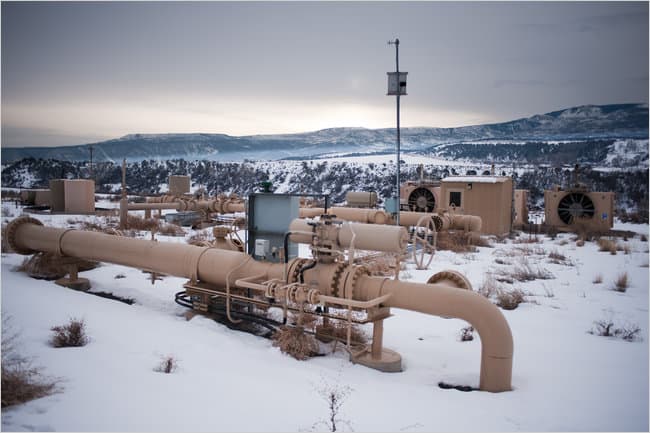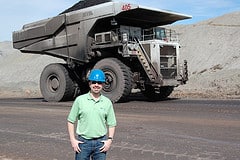As you all know, I think it’s really important that the public gets a chance to understand Forest Service (public land, natural resource) issues so they can make informed choices. The problem is that institutions such as policy centers don’t really help on the day to day issues and don’t necessarily allow dialogue with the public on the web; I hope this blog helps with that.
News stories are intended to help inform the public, but by their very nature and the current structure of the news industry, I don’t think they can ever be the right place. Even if the journalist takes the time to understand the complexity, and is committed to presenting both sides fairly, there is no guarantee that that can fit into a newspaper article format. It seems like a structural problem that falls somewhere between the Extension role and a journalism role.
So in this case I will take a news story and try to clarify the issue according to my understanding.This one I know something about (although I am not currently working on this, just to be clear), so I thought by posting here I could help share with readers my understanding of the somewhat arcane and confusing oil and gas terminology and processes (of course readers are interested in forest planning, so arcane and confusing is familiar territory 🙂 ). Here’s the link. I also need to clearly state that I am not saying that the proposed rule is without flaw and directly transmitted by a Higher Power. I just think it’s important to understand what the issues really are. If we, who know, don’t inform the public, who will?
Amid efforts to protect Colorado’s pristine forests, drilling rights makes inroads
PARACHUTE — While top environmental stewards in Washington, D.C., fine-tune a plan to protect 4.2 million acres of roadless public forests in Colorado, regional Forest Service managers are opening some of that land to oil and gas drilling.
Drilling rights for several thousand acres in the Elkhead Mountains west of Steamboat Springs and the Mamm Peak area on the Western Slope are to be auctioned in November.
Forest Service officials at the agency’s regional headquarters in Denver declined to comment. Federal Bureau of Land Management officials confirmed the lease sale.
“It’s up to the Forest Service, and we don’t want to second-guess their decisions on how they manage federal lands,” BLM spokesman Steven Hall said.
The offering of access to minerals under pristine roadless national forest land has injected new rancor into the wrangling over plans to protect last remaining roadless forests in Colorado and other Western states.
“It’s looking like the current Forest Service regional leadership gives lip service to roadless area protection,” said Mike Chiropolos, lands program director for Western Resource Advocates, “but its actions don’t match its words.”
It seems to me that somewhere in the previous paragraphs it should have been made clearer that these leases have what are called “No Surface Occupancy” stipulations which means that the gas will be accessed from outside the roadless area through directional drilling. “NSO’s”, as they are known, prohibit surface occupancy, including well pads and roads.
Now I’m not sure exactly how that could affect a roadless area’s “pristine”- ness, since neither fish, wildlife nor humans can tell whether that gas is being pumped out. If they are claiming otherwise, I and others would be very interested to know more.
The proposed lease sale also highlights a growing peril of the lengthy crafting of a plan to protect roadless forests: As decisions are delayed, incursions keep happening.
These leases are also allowed under the 2001 Rule. So frankly I can’t draw any line at all between the Colorado process (“lengthy crafting of a plan”, who else could the author mean?) and leases under roadless, even if I agreed that it’s an “incursion.”
An aerial survey of several contested areas on Friday by the Theodore Roosevelt Conservation Partnership revealed dozens of roads constructed over the past decade — many leading to well pads carved out of forest.
Clearly this didn’t occur on areas with NSO stipulations, so it’s not clear to me how is this relevant to the topic.
“We want to make sure the highest-value areas are safeguarded,” said Nick Payne, Colorado field representative for the partnership, a national advocacy group.
Forest Service managers “should not be leasing parcels on roadless areas right now, until the rule is passed. Then we’ll have firm guidelines,” Payne said.
I don’t know what is meant by “firm guidelines”, nor what they are intended to do”; IMHO it would have been helpful to ask for more specificity from Payne here.
The core question many residents of western Colorado face is whether they stand to gain more in the long run from recreation industries, which require pristine forests, or mining and other extractive industries that need roads.
Interesting assertions. Does the recreation “industry” require “pristine” forests? On my vacation I noticed a lot of recreationists on roads. I see people having a great time on 14ers with mining roads, from which you can see dams, roads, towns, etc. And what exactly does “pristine” mean? If it means “untouched by human impacts,” does that include air pollution and climate change? Can human trails exist? You want to write with colorful, meaningful words.. but there is a tension between writing the readable and being careful so people understand.
And going back to the topic, since NSO’s require no roads in roadless areas, this must be an argument against oil and gas drilling at all outside of roadless areas.
Hunting outfitter Jim Bryce, making a supply run from his camp in the currently roadless Currant Creek area this week, said roads into that contested pristine habitat would ruin his business. Currant Creek provides habitat for elk and deer.
But these leases have NSOs, so there would be no roads.
Coal-mining companies that supply power plants in the eastern U.S. oppose roadless protection because they seek access to reserves.
“If they go in there and punch in coal mines and make roads, it’ll be just another area cut up by roads. This whole country is getting cut up, and it affects the wildlife and everything else,” said Bryce, 59, based in Delta, who has run his company for 31 years.
Oxbow Mining employs more than 300 miners at its Elk Creek mine nearby, and neighboring mines employ at least 700 more.
I don’t know how coal (which needs roads to vent methane but is allowed on only 20 K or so acres in the proposed rule) even entered this story which has the topic “NSO leases advertised.”
By early next year, U.S. Agriculture Secretary Tom Vilsack is expected to decide on the plan Colorado officials and regional foresters hashed out together over several years.
It offers top-tier protection to about 13 percent of the land protected under the Clinton-era roadless rule, which blocks most road-building on 4.4 million of the 14.5 million acres of national forest in Colorado.
Federal courts still are scrutinizing that 2001 rule. The Colorado proposal would make exceptions for mining, logging and ski-area expansion.
I would object to the use of the term “logging” used here. That usually implies trees going to mills. I think this sentence would be more accurate and clearer if it said “20K acres for the North Fork Coal Mines, fuels treatments for 1/2 mile around communities and 8K acres for ski area expansion. This week, at least, I think fire protection for communities would resonate differently from “logging.”Also the writer’s choice to use the acres as I did, calculate them as a percentage of the total (e.g. 20K/4.2 mill=.005%) or not include acreages are all accurate in their own way but may be perceived differently (FWIW, I would have used the acres and let the reader do the math).
Environmental Protection Agency officials have urged the Forest Service to ensure top-tier protection for more land.
The drilling rights that federal foresters are offering have had stipulations attached in the past, limiting surface activities. Exceptions can be made.
This sentence is not clear to me. But it would seem to be a good time to mention that the proposed Colorado Rule has specific restrictions against changing such stipulations after the lease is sold.
Energy companies also can drill horizontally so that wells adjacent to roadless forests could be used to extract gas and oil.
Some groups, such as the Theodore Roosevelt Conservation Partnership, support that approach to development. Others do not.
“The impact of more energy development is going to result in more fragmentation, more isolation, of that roadless area,” said Peter Hart, staff attorney for the Wilderness Workshop in Carbondale, who noted that the Forest Service already has approved 70 wells in the Mamm Peak area, where lynx, a threatened species, have been found.
“Lynx and other wildlife are using this area as a movement corridor, and connectivity is necessary to ensure that these species can survive,” Hart said.
This is either a question of 1) not trusting the NSOs to stay in place or 2) saying that even if the drilling occurs outside roadless areas, it still impacts roadless areas. I can’t really tell which. The Mamm Peak wells were approved based on existing leases without NSO’s (as far as I know) so, again, not clear that that’s relevant.
It seems like this story is really about “some people don’t like leasing in roadless areas, even if no roads or pads are allowed in the roadless areas. They don’t think there is sufficient regulatory certainty or they think ???”. This would be an interesting story to read, to me. In fact, this is exactly the kind of question that would profit from some respectful blog discussion, IMHO. But maybe that would be too short or too specific (or wonky) to fit a newspaper article or newspaper buyers might not want to read it. What do you think?







